Rinelle Grey's Blog, page 24
April 13, 2013
L is for Love
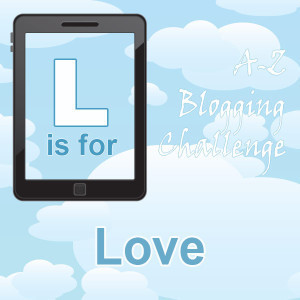 Love is a topic that has fascinated writers for ages. Whether it is the main storyline, in books such as Pride and Prejudice, or a sub-plot in epic stories such as Star Wars, most stories include at least an element of romance.
Love is a topic that has fascinated writers for ages. Whether it is the main storyline, in books such as Pride and Prejudice, or a sub-plot in epic stories such as Star Wars, most stories include at least an element of romance.
So why is love such a popular topic? Well, we could go back to biological roots, and assume it’s because the main drive for most species is to reproduce, but I think it’s more than that.
Humans are social animals. We need others of our kind to survive, and thus what most of us desire, is to find someone who we can connect with on an intimate level. Most of us want to love and be loved. And something that is such a widespread need for the majority of people, makes fodder for great stories.
What do you think? Why is couples falling in love (whether it ends happily or not) such a popular topic? Do you prefer to have some love storylines in books and movies, or would you rather they were left out?
The post L is for Love appeared first on Rinelle Grey.
April 12, 2013
K is for Kissing
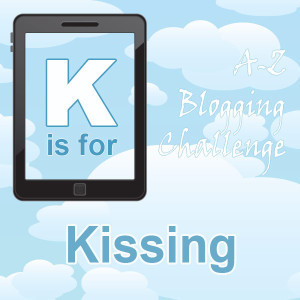 If you’re writing a romance of any description, or even just a story with romantic undertones, chances are there is going to be kissing. And what’s so hard to write about a kiss, you might think. At least it’s not sex, right?
If you’re writing a romance of any description, or even just a story with romantic undertones, chances are there is going to be kissing. And what’s so hard to write about a kiss, you might think. At least it’s not sex, right?
Well, surprisingly, kisses are harder to write than sex. They’re short, and everyone knows how they go. Describing the actual process (all that saliva, eww), really doesn’t lead to a romantic scene. You need something more. What I think really makes a good kissing scene, is the character’s emotions. So that’s what I try to emphasize in my scenes. Whether I achieve that or not, well, I’ll leave it to you to decide, with an excerpt from Reckless Rescue.
Background: Marlee and Tyris are pretending that they are in a relationship to stop the rest of the community from pressuring them. But, of course, there are questions as to whether their relationship is real or not. This scene is from Marlee’s point of view, and her mother is the one asking questions.
“You have to admit it’s a fair enough question. The two of you haven’t exactly been overly affectionate.”
“I didn’t realise that public displays of affection were necessary,” Tyris said. Thank goodness he was defending them, because she couldn’t think of a thing to say. “But if this can be solved by a simple kiss…”
He bent his head and all thought of her mother and defending themselves vanished. His lips crushed hers, and heat shot through her in an unexpected surge.
Her lips parted, and she rose onto her toes to bring herself closer. Of their own accord, her arms went around his neck. Tyris pulled her body tight against his with a hand in the small of her back. For some reason, her knees felt weak.
Pulling back, he stared down at her, his eyes dark with desire and flashing with frustration. Marlee caught her breath.
“Hopefully that should be sufficient proof,” Tyris said icily, “but if not, feel free to visit, and I’ll be happy to give a more intimate demonstration.” His arm didn’t leave her waist as he swept both of them towards the door, leaving her mother, mouth hanging open, behind them.
All this month I’m participating in the A-Z blogging challenge, writing a blog post for each letter of the alphabet, on every day of the month except Sundays. Check back regularly to see what else I have in store for you.
The post K is for Kissing appeared first on Rinelle Grey.
April 11, 2013
J is for Juggling
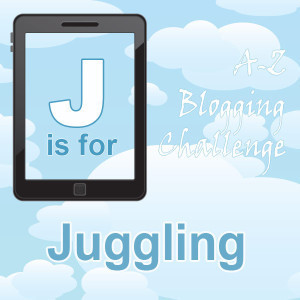 No, I’m not going to be talking about throwing balls up in the air. I’m talking about juggling the many roles and responsibilities we all have. I had planned, when I wrote my list for the A to Z challenge, to try to offer some advice, and some ways to deal with juggling both promoting your book and writing your next one. But at the moment, I don’t feel like I have any advice to offer.
No, I’m not going to be talking about throwing balls up in the air. I’m talking about juggling the many roles and responsibilities we all have. I had planned, when I wrote my list for the A to Z challenge, to try to offer some advice, and some ways to deal with juggling both promoting your book and writing your next one. But at the moment, I don’t feel like I have any advice to offer.
I was so excited, the first week of this challenge, to be achieving lots both with my blogging, and with editing Reckless Rebellion for the Camp NaNo challenge. The first month was great. But as is usually the way with these challenges, the second week is dragging, and the two weeks following that are neverending. I’m struggling with juggling both challenges, and I’m feeling like I’ve completely dropped the ball on parenting, cleaning, and of course, my day job!
Sometimes, juggling too many things leads to you dropping some. And I think, it’s important to be selective about which ones you drop, so that it’s not any of the important ones! I’ve always said on this blog, that my family comes first, and I need to keep remembering that. Not sure yet if I’m going to be dropping any of the challenges, or just scaling back a little, but I do think it’s time to re-assess my priorities.
How do you cope with juggling too many things? Or are you better at only taking on things you can manage in the first place?
All this month I’m participating in the A-Z blogging challenge, writing a blog post for each letter of the alphabet, on every day of the month except Sundays. Check back regularly to see what else I have in store for you.
The post J is for Juggling appeared first on Rinelle Grey.
April 10, 2013
I is for Images
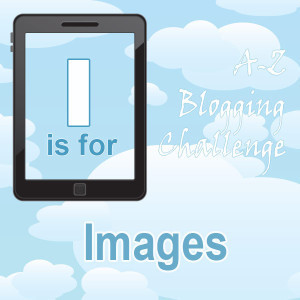 You would think, an author’s job being to write words, that we wouldn’t have much use for images. But the reverse is true. You’ll need an image for the cover of your novel at the very least, possibly more than one. (The cover of Reckless Rescue uses three different images in fact.)
You would think, an author’s job being to write words, that we wouldn’t have much use for images. But the reverse is true. You’ll need an image for the cover of your novel at the very least, possibly more than one. (The cover of Reckless Rescue uses three different images in fact.)
How about your blog? Your facebook page? Twitter? Think that is mostly writing too? Think again. Research has shown that Facebook posts with an image recieved 104% more comments than those without. Blogs are no different. Then there’s Pinterest. Did you know that no one can pin your blog post (and send it out to their possibly hundreds of subscribers), if you don’t have an image in it.
Far from the days when images were frowned upon because they took up so much bandwidth and made the page too slow to load, users are starting to expect an image in a page, to the point that one without images can seem dull, and even hard to read.
Now you may be thinking ‘But I’m a writer, not a photographer? Where do I get images?’ As if things weren’t hard enough. Many people get around this by using Google image search, finding an image they like, and using it in their page.
But every single one of those images are owned by someone. What would you think if someone found your ebook or blog post, and included it in an anthology/article they were writing without your permission? Well, photographers feel the same way about their images. How do I know? Whether they’re home enthusiasts taking photos of their dogs and kids, or a professional photographer who relies on their photographs as an income, their images belong to them, and should not be used without permission.
So how do I know if an image can be used or not?
It’s safest to assume it can’t. Unless it’s specifically posted on a photo sharing site that allows use of images, then I wouldn’t risk it. Even with many of those sites, commercial use (if your blog has advertising, or is used to sell books, or in any way makes you money), is sometimes different to personal use (using it on a blog that doesn’t make money, saving it as a desktop background for your computer etc). Check the fine print.
It is worth looking at commercial sites for your images. Small, web use images, can sometimes be as cheap as $1 each, and I think it’s worth it for the peace of mind.
The three images used in the cover of Reckless Rescue, and most of the images used on my blog, all came from istockphoto.com, one of the largest stock photography sites around. I’ll admit here and now, that I use Istock because I sell my own work there. I like them for the sheer huge number of images, and because I know, personally, that all the images go through a rigorious inspection process.
Where do you get images for your blog? Do you take your own pictures? Do you like seeing images in blogs?
The post I is for Images appeared first on Rinelle Grey.
April 9, 2013
H is for Help
 Authors seem so far distant from readers. Even in today’s world, where they have blogs, Facebook pages and twitter accounts, it still seems as if they’re apart from everyone else. As though they have all the answers, and can do it all.
Authors seem so far distant from readers. Even in today’s world, where they have blogs, Facebook pages and twitter accounts, it still seems as if they’re apart from everyone else. As though they have all the answers, and can do it all.
But it’s not true. Authors need our help. No matter whether they’re self-published or traditionally published, whether they have one book or twenty, they all could do with a little help now and then.
Want to know how you can help your favourite author? Here’s how.
Review
Nothing is more helpful for selling books than reviews. No matter how many reviews your favourite book has (or doesn’t have), one more will always help. I don’t know about you, but I was always put off writing reviews because I didn’t know what to say. Now I’m making myself just write it. Any review is good, no matter how long or short, how eloquent or simple. Even if all you say was “I loved this book”, it helps.
This article gives some more great tips. Now get out there and write that review!
Share
The truth is, more sales are made by word of mouth than any other means. If you’ve enjoyed a book, help out the author by sharing it, on Facebook, Twitter, Goodreads, or wherever else you talk about books. And help out your friends at the same time by introducing them to a good book.
Communicate
If a book has really touched you, one of the best things you can do is tell the author. Even better than a review or sharing, an author loves to hear that their work has been enjoyed. Because that’s why most of us write. It’s not about the money, or the fame, it’s about sharing a story that we love with someone else.
Most authors are approachable, and would love to hear from you. Take the chance, give it a go.
Do you have a favourite author? Have you done any of these things to help them out? Do you think authors are more approachable than they used to be?
All this month I’m participating in the A-Z blogging challenge, writing a blog post for each letter of the alphabet, on every day of the month except Sundays. Check back regularly to see what else I have in store for you.
The post H is for Help appeared first on Rinelle Grey.
April 8, 2013
G is for Genre
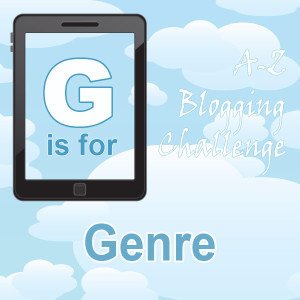 Is genre still useful in today’s book world?
Is genre still useful in today’s book world?
With the advent of self-publishing especially, the old categories are being blurred, and the genre lines are frequently being crossed. As we deviate more and more from the ‘norm’ of stories and genre, is the way we categorise books making it harder for readers to find what they’re looking for rather than easier?
Genre in the Past
When I think back to my experiences of genre as a child, it seems rather lacking to me. I read voraciously, going through almost the entire children’s/young adult section in my local (rural) library. There, books were organised by author, not genre, so I read a huge selection, not really differentiating between romance, fantasy or drama. I didn’t think about what genre I was reading (unless it had horses, then it was at the top of my list!), just read the back, and if it was interested, I borrowed it.
Bookstores (at least, the second hand ones I frequented) were the same. It wasn’t until I was in my late teens and discovered fantasy that I noticed any genre segregation at all.
Genre in libraries and bookstores
Most libraries are still organised like this (at least, my local one is). Fiction books are arranged by author. They do also have little stickers on the spine that give an indication of genre (like romance, western, mystery etc.), and sometimes there are small display type shelves devoted to a particular genre, but there are a lot of books without stickers.
So I went to check out my local bookstore, to see if they organised by genre. The answer was both yes and no. The fiction section took up one wall, and had sections for ‘Sci-Fi and Fantasy’, ‘Paranormal’. Everything else was lumped in together under the heading ‘Fiction’.
So where is all this genre stuff?
Genre, it seems, is at its strongest in the online world. One of the great benefits of the electronic world is its ability to sort and categories data, to perform searches, and to narrow down what we’re looking for. This is good, because the online world is filled with an enormous amount of data.
And unlike the physical world, the lack of real ‘shelf’ space means that you no longer have to pick one category and one category only for your book. It can be in Sci-Fi and Romance at the same time, and be seen by both sets of readers.
So this is a good thing, right?
Maybe. Genre definitely has it’s uses. It enables a reader to find books similar to the one the just enjoyed. It helps them sort through the colossal amount of books, and narrow it down to ones they might enjoy.
It also means that unlike a bookstore, where they had to walk past Sci-Fi to get to Romance, they may never see all those good books that they might have enjoyed.
The trick is to find ways to use this categorising ability to our advantage. We WANT our book to get in front of the readers who are most likely to appreciate it. But we also want to get it in front of as many of these readers as we can.
So what’s the problem?
The problem I see is the narrowness of the categories available. When you have a book that doesn’t neatly fit into any of the existing categories, it becomes very hard to find your target audience. New categories, many a blend of existing genres, are evolving every day. Urban fantasy. Paranormal romance. And many many others.
But getting them into the right categories on Amazon (the only seller I have experience with) isn’t easy. The first problem is the fact that the categories you see on the Amazon store aren’t the ones you get to choose from when you’re uploading your book! Extremely frustrating. I would have put Reckless Rescue in the futuristic romance category, that’s where it belongs, but it wasn’t available as a choice.
This makes it harder for readers who want to read books of this kind to find what they’re looking for. Sci-Fi Romance books are hard to find on Amazon. When I first started writing Reckless Rescue, I wanted to read other sci-fi romance books, to get an idea of what was out there, and how my book compared, but I struggled to find any!
So what can we do?
As I discovered later, Amazon isn’t the only way to find books you’re looking for! Goodreads is great. (Yes, I know it was bought by Amazon, but I’m holding to the belief that it isn’t going to change, just as Book Depository didn’t after they were bought by Amazon.) The lists there are great for finding books around genre, as are the groups.
What do you think? Does genre have a place in today’s book world? Authors, have you had trouble getting your book into the right category? And readers, how do you find books that you like?
The post G is for Genre appeared first on Rinelle Grey.
April 6, 2013
F is for Facebook Ads
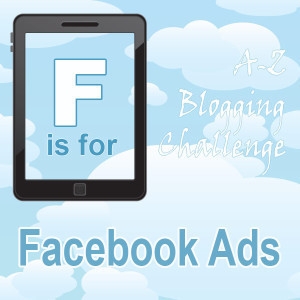 There are many different places you can advertise your book. Goodreads advertising space, Google ad words, Facebook and many small independent blogs and book sites.
There are many different places you can advertise your book. Goodreads advertising space, Google ad words, Facebook and many small independent blogs and book sites.
So why did I choose Facebook?
OK, you got me. I had a free $50 voucher for Facebook advertising that I recieved when I signed up with my hosting company! Seemed a shame not to use it.
Creating the advertisement
 Facebook ads are small and short. You need something to grab your reader, and encourage them to click on your link. A photo is important, make sure it’s the exact dimensions that Facebook specifies, so you don’t waste any space, or have anything cut off. Since Facebook ads are landscape, your book cover probably won’t be suitable. I used the same images though, to give the same feel.
Facebook ads are small and short. You need something to grab your reader, and encourage them to click on your link. A photo is important, make sure it’s the exact dimensions that Facebook specifies, so you don’t waste any space, or have anything cut off. Since Facebook ads are landscape, your book cover probably won’t be suitable. I used the same images though, to give the same feel.
You have 90 characters to go with your picture (including spaces), so you need to make them count. A short phrase is all you can get.
Here’s my ad for Reckless Rescue. I’m pretty happy with how it turned out.
Target audience
I was blown away by the amount of options you had when targeting your ads! You could choose locations, language, age ranges, gender, single/married/relationship, education etc. Then you could select both broad categories, and specific tags for your ad. I tried to make my range as large as I could, while still choosing options that I thought would put my ad in front of the people most likely to click on it!
Budget
I set my budget for $5 a day, meaning my $50 would last for 10 days. You pay small amounts for the number of views, and slightly more per click. Facebook seems to spread this out over the day, so you won’t run out of money half way through the day, the only difference, I guess, is how many times your ad is displayed througout the day.
Come on, get to the point – Did it Work?
Well, that depends on what you’re hoping to achieve out of it. Did I have hundreds of people buying my book all of a sudden? I wish! No.
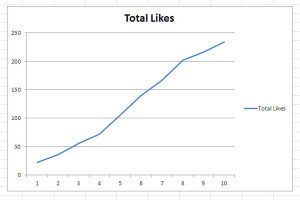 What I did get was more likes on my facebook page. I started out with 22 likes – mostly friends and family. By the end of the 10 days, I had 241 likes! I was pretty happy with that increase.
What I did get was more likes on my facebook page. I started out with 22 likes – mostly friends and family. By the end of the 10 days, I had 241 likes! I was pretty happy with that increase.
In case you’re new to my blog, I love stats and graphs, so as much as anything, I really enjoyed watching the line go up on this graph, it certainly made me feel productive.
 One thing I found really interesting was that the increase in likes was higher than the likes Facebook recorded through direct clicks. You can see here, the blue bars are the ad clicks, the red bars are the likes Facebook recorded, and the green bars are the actual extra numbers of likes I had.
One thing I found really interesting was that the increase in likes was higher than the likes Facebook recorded through direct clicks. You can see here, the blue bars are the ad clicks, the red bars are the likes Facebook recorded, and the green bars are the actual extra numbers of likes I had.
I can only assume that this is because other people see their friends liking a page, and check it out too?
How does it sell books though?
Initially, I had my ad set up so that people arrived on my Facebook page when they clicked on the ad. I left it that way for two days, until I had 50 likes, then I switched it so that people landed on the app that displays my book information. To my surprise, this didn’t decrease my likes any! And I did get a few click throughs to Amazon on my book (which I could tell, because I used my Amazon associates links!)
It’s hard to tell if this sold any books at all (no sales were directly recorded as a result of the clicks), but it did get my books cover and blurb in front of 200 new people!
Would I do it again?
For $50, I think it was a pretty good investment. I’d probably be willing to try it again some time in the future. I’d also like to look into other forms of advertising, like GoodReads and Google Ad words. Now if only someone would give me a voucher for those…
What forms of advertising have you tried? Any you’d recomend? Do you click on ads, and if so, what inspires you to click?
All this month I’m participating in the A-Z blogging challenge, writing a blog post for each letter of the alphabet, on every day of the month except Sundays. Check back regularly to see what else I have in store for you.
The post F is for Facebook Ads appeared first on Rinelle Grey.
April 5, 2013
E is for Editors
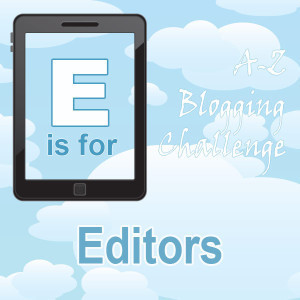 Hiring an editor is one of those hot topics in self-publishing. Something no one should do without. It has even been said recently, on one popular blog, that if you can’t afford to hire an editor, then you shouldn’t be self-publishing.
Hiring an editor is one of those hot topics in self-publishing. Something no one should do without. It has even been said recently, on one popular blog, that if you can’t afford to hire an editor, then you shouldn’t be self-publishing.
I agree that editors are important. I’ve worked with two in the process of getting Reckless Rescue ready for publication. First I hired a content editor, who read over the entire story, and suggested places where it didn’t hang together, where the characters seemed out of character, or where the story moved too fast or slow. I loved working with her, and really feel that her advice helped me improve the overall feel of the story.
I also hired a line editor, who went over my grammar (not my strong suit!), sentence structure, and also pointed out some smaller plot holes/inconsistencies. She also did a final proofread for me.
Reckless Rescue would not be the book it is without the help of these two people. Editors are important, you won’t get any arguement for me.
What I disagree with is the idea that it has to cost you thousands of dollars. Yes, if you do a search for editors, and check their prices, most companies and well known individuals will charge in the region of a thousand dollars to edit the average length manuscript. But there are other options.
Look around. Seach some of the popular self-publishing forums, many of them have a post, or even a whole section, devoted to people who are offering editing services cheaply. I found my content editor when she advertised a good deal on twitter, it cost me only $80. I found a whole list of editors on, I think, the kindle forums.
If all else fails, there are a few webpages where people offer freelance services, such as Elance or Freelancer. You offer your job, your price range, and wait to see who offers.
When you’re looking through these resources, it’s important not to judge them purely based on price. Check out what sort of books they do, and download a couple, even if it’s just the samples. If you find that the books are full of mistakes, then that’s a good sign to stay away! If you’ve checked them out, and all looks good, the next step is to ask if they do a sample edit. Most editors should do this for free. Sometimes the first chapter, sometimes only the first thousand words, but it’s worth the effort to send a sample so you can get a feel for how they will work with your story. They should also, at this time, give you a quote for the entire manuscript.
So there you have it. Editing is important, but it doesn’t need to cost you an arm and a leg.
Do you have any experience with editors? Any suggestions on other places to look for a good, affordable editor?
All this month I’m participating in the A-Z blogging challenge, writing a blog post for each letter of the alphabet, on every day of the month except Sundays. Check back regularly to see what else I have in store for you.
The post E is for Editors appeared first on Rinelle Grey.
April 4, 2013
D is for Doing Without
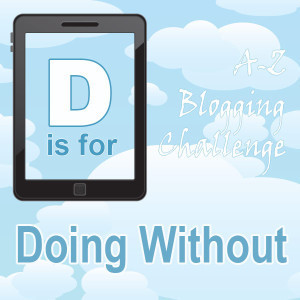 Doing without is something the characters in my novel, Reckless Rescue, have had to learn to live with. When their planet was threatened by a life ending meteor, the political leaders fled, taking with them the valuable research and scientists, leaving everyone else behind.
Doing without is something the characters in my novel, Reckless Rescue, have had to learn to live with. When their planet was threatened by a life ending meteor, the political leaders fled, taking with them the valuable research and scientists, leaving everyone else behind.
Some of the people managed to escape to a nearby planet, but with no way to go further, they werestill cut off from the life they knew, and any access to resources. In the twenty years before my story starts, they’ve had to learn to live without access to shops, electricity, or any of the luxuries we all take for granted.
They have to grow and process all their own food, make their own clothes, and build their own houses. It’s lucky they’re a resourceful bunch. Despite all this though, many of them want to return to the Colonies, not because of the hardships they live with, but because there is a quiet menace on the planet—a gas that is destroying their fertility.
Doing without children is far worse than all the other things they have learned to live without.
If you’re interested in reading more, you can read the first two chapters of Reckless Rescue for free.
What would you hate to live without? Chocolate? Coffee? Running water? Indoor plumbing?
The post D is for Doing Without appeared first on Rinelle Grey.
April 3, 2013
C is for Camp NaNoWriMo
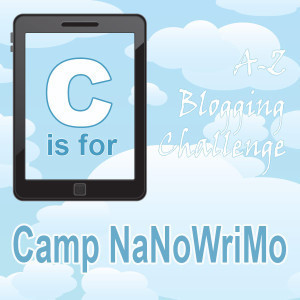 As if the A to Z challenge wasn’t challenging enough, this month I’m also doing Camp NaNoWriMo. Anyone who is a writer has probably heard of NaNoWriMo, the National Novel Writing Month. If you haven’t, it’s kind of like the A to Z challenge, except every day you try to write 1,667 words. If you manage to do this every day for the month, you end up with a 50,000 word novel. Cool huh?
As if the A to Z challenge wasn’t challenging enough, this month I’m also doing Camp NaNoWriMo. Anyone who is a writer has probably heard of NaNoWriMo, the National Novel Writing Month. If you haven’t, it’s kind of like the A to Z challenge, except every day you try to write 1,667 words. If you manage to do this every day for the month, you end up with a 50,000 word novel. Cool huh?
I’ve been doing NaNoWriMo since 2006. Some years I’ve “won”, some years I haven’t. Not once have I regretted the words I did manage to write.
Camp NaNoWriMo is an offshoot, still run by the same people, but slightly different. For one thing, you can set your own goal. You will also be assigned to cabins, small groups of up to six fellow writers, who you can share the months highs and lows with.
The first year I tried it, half my cabin mates went silent by the end of the first week. I couldn’t really blame them, I dropped out half way through too. This year I’m in a cabin with 5 of my fellow writing friends, and I’m looking forward to making my 50k goal. Hopefully that will see a majority of my novel, Reckless Rebellion, done. You can watch my progress in the sidebar (I did start with about 9,000 words), underneath the novel cover, or over on the Camp NaNo site.
What else are you trying to fit in this month? Any other great challenges you’d like to share? I think I’ll be looking for a new one next month!
The post C is for Camp NaNoWriMo appeared first on Rinelle Grey.



